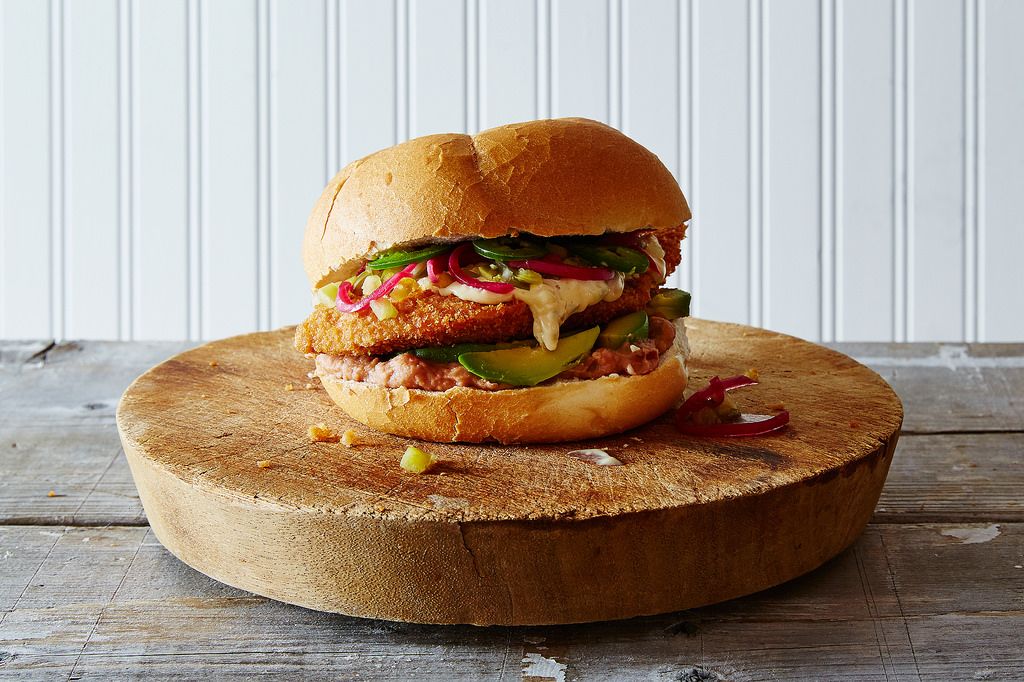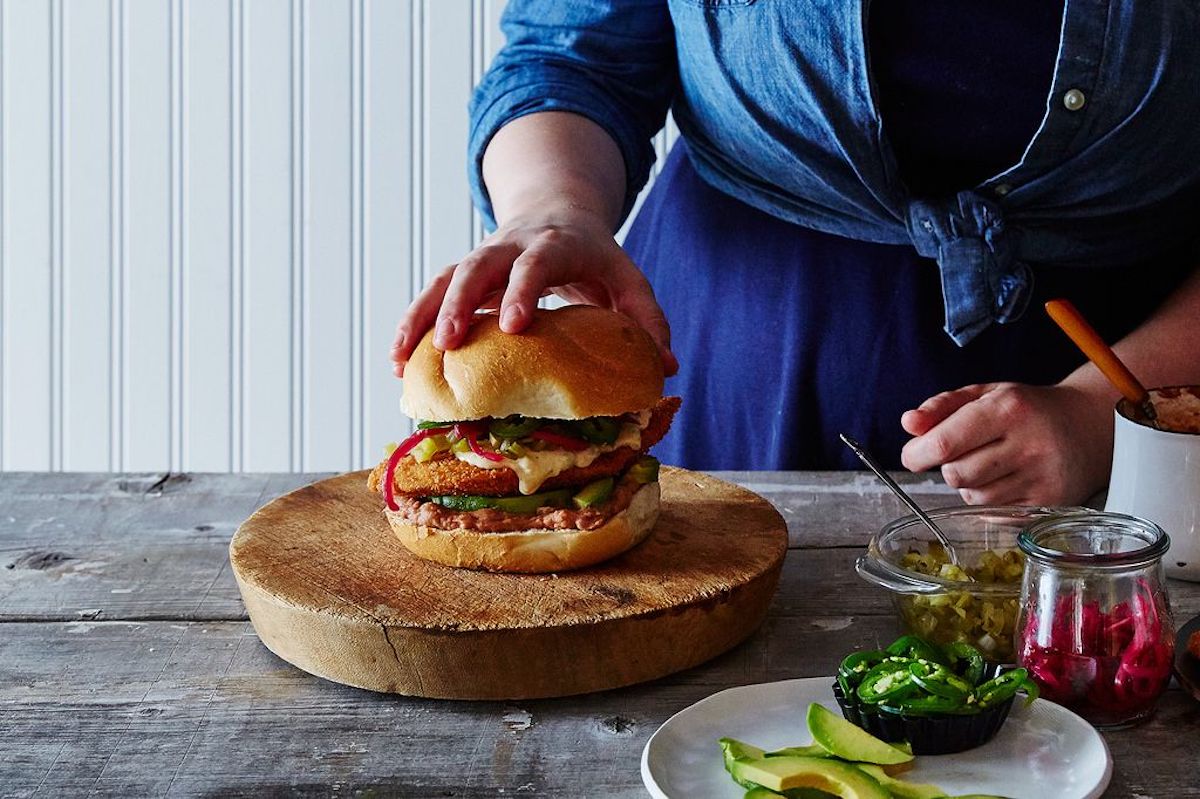On a quiet corner in the Roma neighborhood of Mexico City, the employees at Tortería Los Güeros, a torta restaurant open since 1974, are going through their opening routine. Genaro Aburto, an owner and torta maker, bends downs to drag a plastic tub into view. “Today is the day we make the pickles,” he says, nodding at the mass of mottled red and green jalapeños bobbing in water. “We’ve already got the carrots, onion, and cauliflower cooking.”
Aburto is just one among legions of torta makers in the capital, those dedicated to assembling Mexico’s most popular sandwich. Though tortas have been eaten for more than a century now, wheat consumption was, at first, fiercely resisted. When the Spanish arrived in the early 1500s carrying wheat, they found an entrenched culture of corn that had been in place for more than 2,000 years. The Spanish created smear campaigns to denigrate corn while proselytizing the purity of wheat; when the taste for bread still failed to catch on, they forced indigenous populations to grow and process it. Hundreds of years later, bread has not supplanted the corn tortilla, though it is eaten as sweet pastry in the mornings, served alongside stews for lunch, rolled into tortillas in the north, and used to sandwich cold cuts and proteins in the ubiquitous, pedestrian torta.
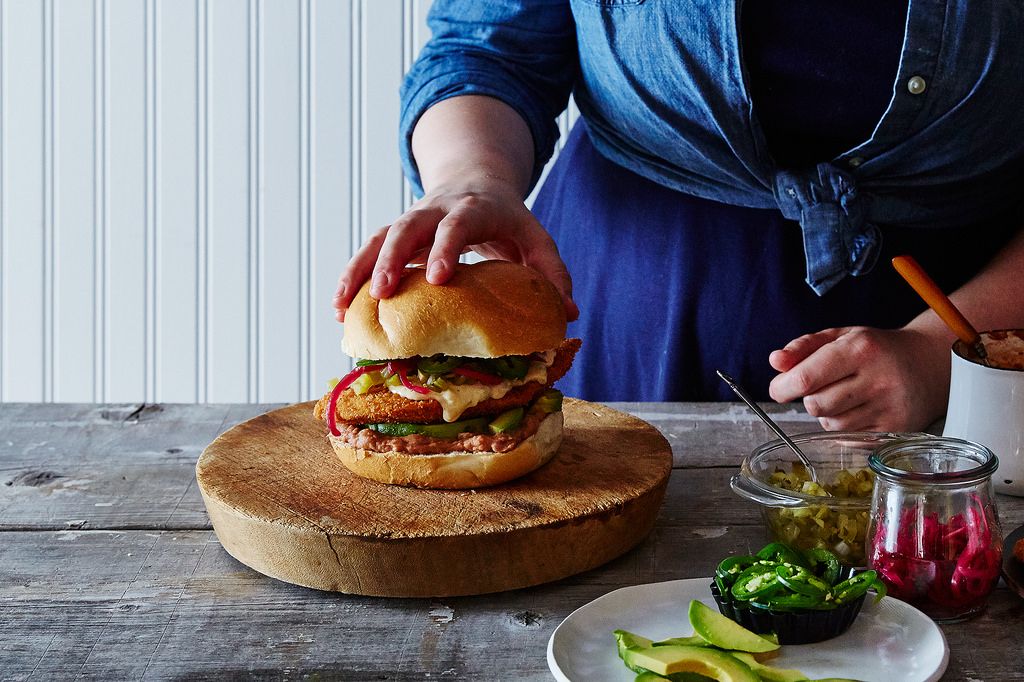 Photos by James Ransom
Photos by James Ransom
There is no single torta origin story, but many — it’s a sandwich born of street-level commerce and cultural exchange. In 1864, a “torta compuesta” was mentioned in a Pueblan newspaper; in 1899, it was referred to in a play; and by 1902, there were registered complaints against roving torta vendors, called torteros. The sandwich continued to grow in popularity throughout Mexico City during the early 20th century, taking the form of a common bolillo roll with local ingredients like roast pork, sardines, or chicken sandwiched inside. By the 1950s, tortas had become quick, inexpensive sustenance for urban workers who could no longer return home for the midday meal. In the 1970s, “tortas eléctricas” emerged to distinguish them from the cold-cut torta style.
Today, the torta is wholly, proudly modern Mexican. The sandwich is popular and commonplace, sold at markets, bodega counters, convenience stores, and puestos, the fixed street stands scattered throughout every neighborhood. Tortas are the everyday sandwich of the populace: cheap, filling, and infinitely customizable. Striated like the preserved layers of minerals in bedrock, the combination of ingredients reflects the creativity of their maker.
As with every national dish, regional variations have emerged, becoming emblematic sandwiches in their own right: the hulkish cemitas of Puebla; the lonches of the north; the pambazos stuffed with potato and chorizo; the French-dip-like torta ahogada, literally “drowned” in sauce. There are tortas stuffed with bacalao a la vizcaína, a Basque-style salt-cod stew enjoyed during Lent; vegan tortas hawked at punk markets; tortas lined with cochinita pibil (citrusy pit-roasted pork) and pickled red onions; and tortas piled high with chilaquiles. The varieties on offer at places dedicated to making tortas — called torterías — have also evolved: The “hawaiana” almost always features rings of canned pineapple; the “cubana” is not kin to the Cuban sandwich but rather a local invention of ham, roast pork, headcheese, two types of actual cheese, strips of hot dog, and fried breaded cutlets of beef milanesa, so named for its origins on the Calle República de Cuba in downtown Mexico City.
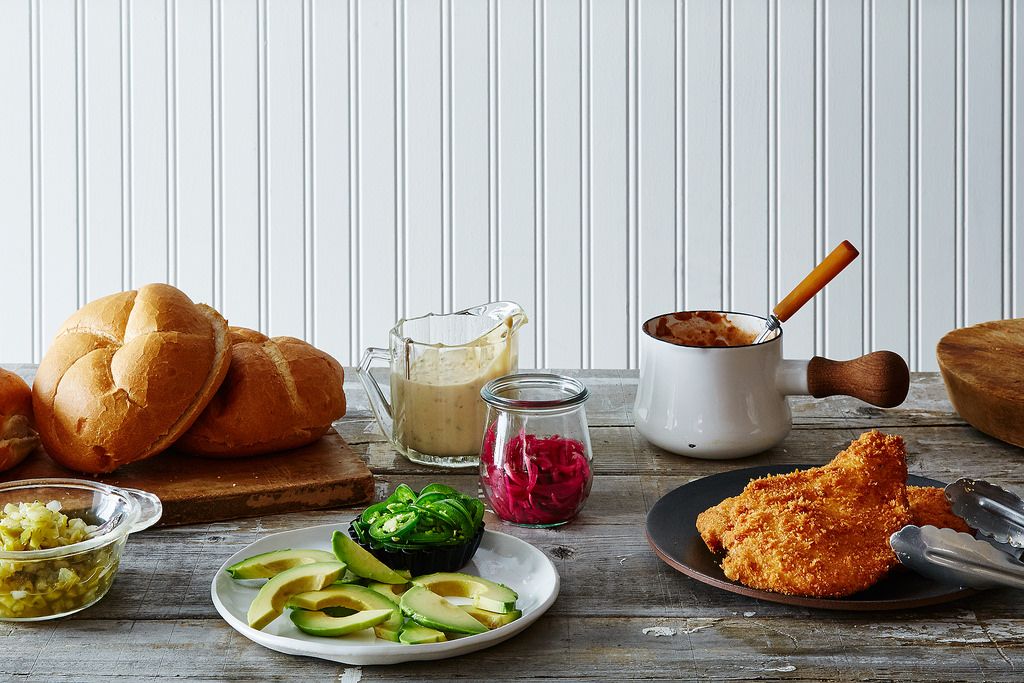
If there are so many varieties, what actually defines a torta? First, the bread: a roll made from a simple, salted wheat dough, most commonly a bolillo (also called birote or francés), which are cheap rolls with fluffy interiors and a dry, crunchy cap; or a telera roll, which is flatter, softer, and scored twice lengthwise. Fresh bread is key. Tortas are not always toasted, so bread made the day of is common practice. The accoutrements are added to the bread first: a swipe of refried beans, to add richness and moisture; mayonnaise, for the same reason; avocado, layered on in shingles; thin rings of raw white onion; tomato, counters with freshness. Lettuce is rare.
Once the vegetables and condiments have paved the way, the proteins arrive. The standard offerings include pierna (thick-cut roast pork leg ringed with scarlet marinade), turkey ham, regular ham, American cheese, queso Oaxaca, panela cheese, fried breaded cutlets of beef or chicken (chopped to bits before being added), and hot dog, more tubular baloney than snappy sausage, cut into thin strips — if you didn’t know a hot dog could be filleted, welcome to the school of the torta. Three proteins, or more, are de rigueur.
Another key element is the pickle, to cut the richness: Common picks are rajas, meanings strips of pickled jalapeño with carrot, cauliflower, and onion in tow, or chipotles en adobo, a vinegar-based marinade laced with piloncillo syrup that plumps the dried chiles. Both of these pickles can come from a can, but old-school torta joints often make their own.
The modern torta tends to showboat with macho heft, boasting of layers upon layers of ingredients; nevertheless, the more modest varieties have a quiet following as well. Restrained and slim, the bacalao torta, for example, stews the dried fish with onion and tomato, plops a few green olives into the mix, and then slap-spreads the fish paste onto the bread with none of the faffy vegetable additions necessary. In the same vein is the pierna con mole torta from Churrería El Moro, open since 1935, which piles dryish pork leg on a roll and douses it with liquid black mole. That is all. Another classic is the early-morning guajolota torta, which slips a steaming tamale from its corn husk and slides it into a bolillo—the ultimate starch-on-starch sandwich that every Chilango has eaten at least once. No sauce. No vegetables. Just corn and wheat, an edible portmanteau.

Surely, all this talk of tortas has you itching to eat one — and the best news is, you can do so quite seamlessly at home. When you set out to make your own torta, there are a few noteworthy elements to help you achieve success:
1. Fresh, cheap bread.
Most Latin American bakeries will sell both bolillos and teleras, and every supermarket bakery will carry some type of simple, crunchy roll. The bread is key. No sourdough, naturally leavened, seeded bread here; and while there is a variety of torta served on industrial, presliced white bread, the crunchy roll is preferred. Split it open, and toast it if you like.

2. The spreads, sauces, and condiments.
Refried beans (the legume needs to be on more sandwiches — am I right?!). Mayonesa, always. Avocado also adds moisture. Whatever vegetables you have in the crisper — tomato, shredded cabbage, slivered serrano pepper. A little sliced white onion. Crushed drained pineapple from a can? Go for it.
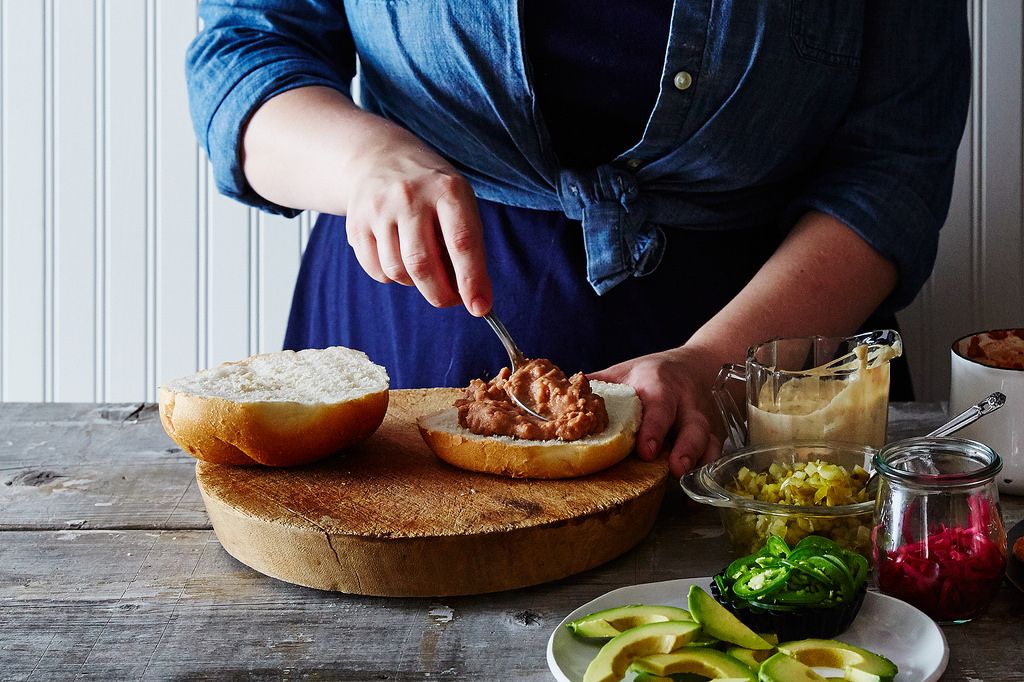
3. The meats.
Whatever you fancy, and multiple proteins if you have them: cold cuts, a mix of ham and turkey, scrambled egg, and so on. Got vegan chorizo? It’s easy to vegan-ify the torta. Cocktail weenies. Leftover rotisserie chicken. Tinned sardines in tomato sauce. A deep-fried chile relleno. Spam. The possibilities are endless — see below for evidence and a few more ideas.
- Crispy chicken cutlet
- Albondigas
- Eggs (hard boiled, fried, or scrambled)
- Braised anything (chicken thighs, pork shoulder, and short ribs are a few of my faves for torta-ing)
- Marinated tofu
- Ham or bacon
- Grilled shrimp
- Chorizo (either in the casing or loose and ground, in which case it’s like a Mexican sloppy Joe)

4. The cheese.
I would say you can leave this off (and really, you can), but cheeses of all kind are the glue to this torta: Melty cheese helps hold things together, and softer cheese can be spread or crumbled for fun textures. Don’t forget the cheese sauce I nudged you toward up above. And if you’re super queso-crazy, using lots of cheese is a great way to go the vegetarian route. Some of my suggestions aren’t super traditional but provide all the necessary, cheesy awesomeness that makes a torta great.
- Panela, or any of those super-firm cheeses you can grill/cook without melting (like halloumi)
- Goat cheese
- Cotija
- Queso fresco
- Jack
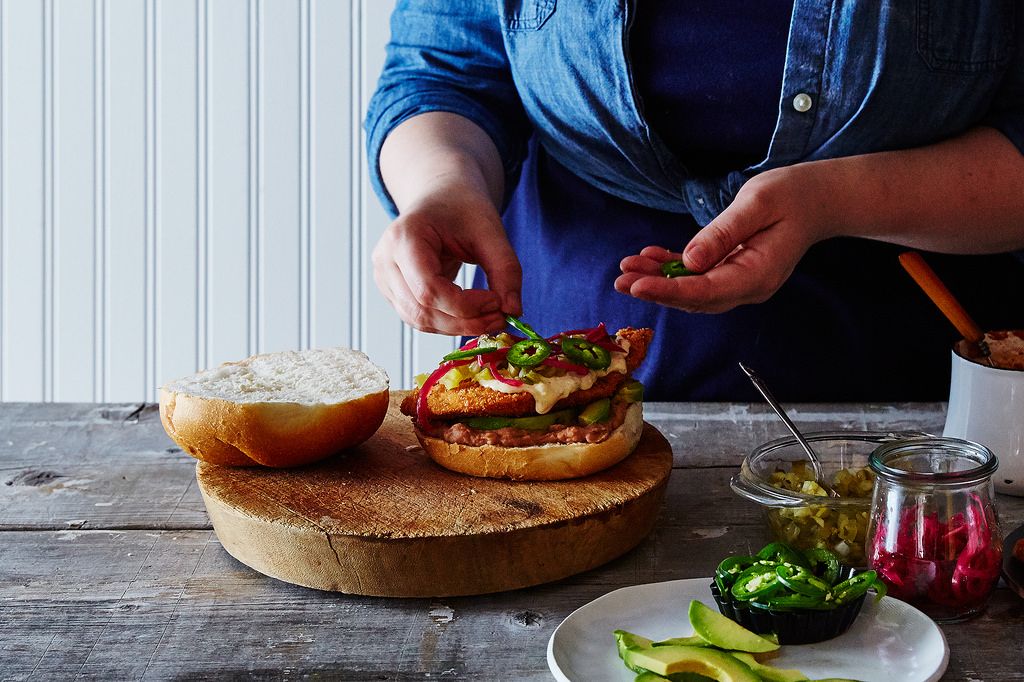
5. The pickles (do not forget the pickles!)
The final topping of a great torta is the pickled bits; they bring the essential spice and tang to the mix. Some recipes to start:
- Pickled anything: jalapeños (or any other pepper), ONIONS (my always, always addition #2), nopales, tomatoes.
- Squeeze of citrus: lime, lemon, or grapefruit.
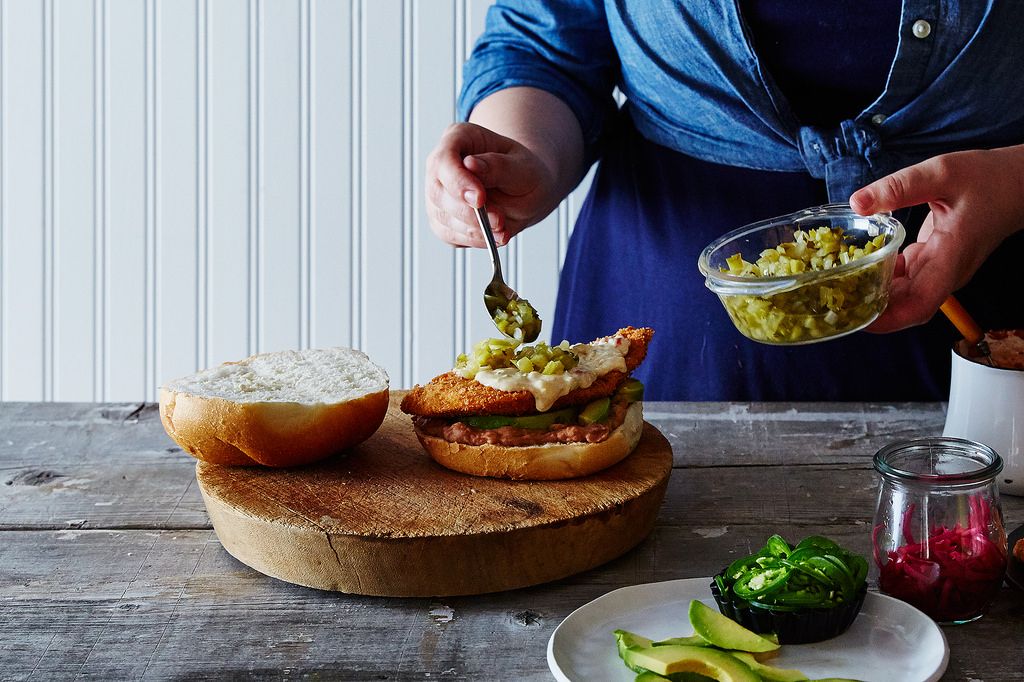
However you lay it on, the best tortas are those made lovingly, with care. Any torta slapped together that falls apart before it reaches your mouth is a bad torta, so build the torta with intent: spread those beans to the edge! Distribute the pickled carrots and peppers evenly. Season each layer of ingredients as you go, then slice and admire the careful striping and structural integrity of the sandwich. The key to a successful torta, according to Aburto, who has been assembling these sandwiches for 46 years, is this: “There are many factors, but first, you have to like what you are doing.”
